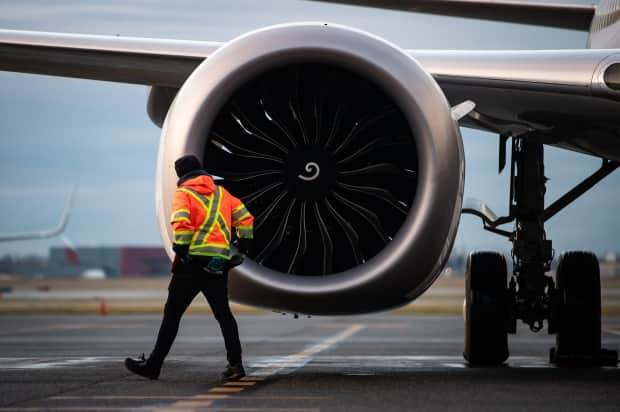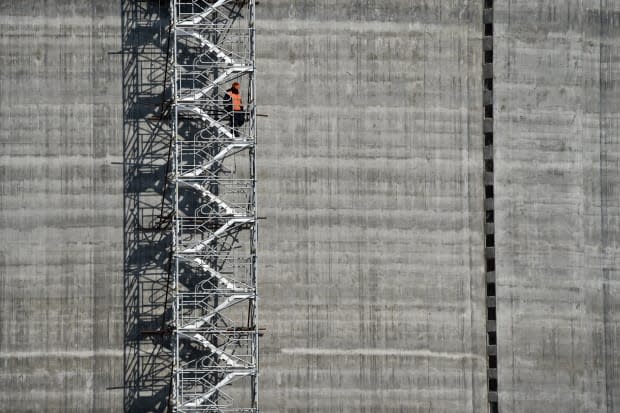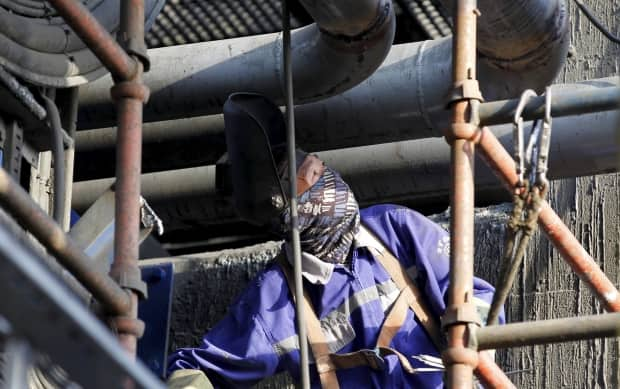Governments lack key data on fly-in workers. Experts say it's putting them at risk

How many fly-in workers are employed in the North, exactly? It's a surprisingly hard number to come by.
That's partly because of a lack of reporting requirements that leave workers open to exploitation and governments in the dark, experts say.
"It's a big, complicated picture, and it's largely invisible," said Barbara Neis, a sociologist at Memorial University and the director of the On the Move Partnership, which studies fly-in workers.
Now, as outbreaks of COVID-19 at remote resource projects expose the scale of the system, researchers say improving transparency about where these workers are employed has never been more important.
"We really need better data," said Sara Dorow, chair of the University of Alberta's sociology department and a researcher on fly-in workers.
"That data of who is in camps, and what is happening in camps, should be publicly [available] ... because it has public implications, as COVID clearly has illustrated."

What we know about fly-in workers
In Canada's North, infrastructure and resource projects depend heavily on labour provided by a transient workforce. Workers are flown from southern jurisdictions to remote worksites.
But data on the size of that workforce is sketchy. Neis says Statistics Canada provides some data, but their counts of fly-in workers are rarely updated and often not released to the public.
Benefits agreements, where they are used, shed a little more light on who is employed by resource and constructions projects. An annual benefits report in the N.W.T., for example, reveals 55 per cent of the mining workforce is flown-in from outside the territory.
But many fly-in workers don't work in industries with impact or benefit agreements. According to Neis's data, the territories rely on fly-in and non-resident workers for everything from health care to food services to transportation.
Even governments are not immune — more than one in five workers in public administration in Nunavut had their residence in another province or territory, her 2016 data showed.
[Governments] really have no control of, or knowledge of, how many workers are out there. - Barbara Neis, sociologist at Memorial University
That same data shows that the system has grown over the past two decades. In Yukon, there were nearly 400 more non-resident workers in 2016 than there were in 2002, according to a 2020 report from Neis and her team.
Canada is far from the only Arctic country to use temporary and rotational workers in this way. In a recent article for The Arctic Institute, Alexandra Middleton, an assistant professor at the University of Oulu's School of Business in Finland, called the practice "widespread across all Arctic states."
But "there is no unified approach on how to measure it," she said in an email.
"[The] model flourished because … it does not require investments into industrial town development, allows for lean and flexible management and [enables] access to a larger supply of qualified workers," her article reads.
But it "comes with an array of negative social effects on the local community and on the workers themselves."

COVID-19 exposes scale of system
Those negative impacts have been on display during the COVID-19 pandemic, as the remote sites become the epicentres for major outbreaks.
Little is known about the size of many work camps, especially those in remote Arctic regions, which can number in the tens of thousands. Reporting on outbreaks has provided a rare window into the scale of operations.
In her article, Middleton notes one case in Russia, where 2,000 cases of COVID-19 were identified in a workforce of 10,000 people.
And the scale of that outbreak demonstrated another fact of fly-in work — its highly infectious conditions.
"People, as a rule, live in modified shipping containers, with eight workers sharing 20 square meters, making it very hard to prevent the spread," she wrote of Arctic projects.
Camp is almost always already a place [where] bodies are close to each other. - Sara Dorow, sociologist at the University of Alberta
Similar waves of infection have occurred closer to home. An outbreak at the N.W.T.'s Gahcho Kue mine led to 19 confirmed cases of COVID-19 among just a few hundred workers, and at least three hospitalizations.
But the ongoing discovery of new cases — and working arrangements which put local residents alongside fly-in workers — has not been enough to prevent the mine from restarting operations, albeit with more rigorous testing procedures.
"Camp is almost always already a place [where] bodies are close to each other," said Dorow, the researcher at the University of Alberta, who surveyed roughly 75 fly-in workers at Alberta oilsands sites.
"Even before COVID[-19] came along, our participants were talking about, you know, somebody sneezes and everybody gets a cold," she said.

Heavy psychological toll
Dorow said part of what makes these workplaces so infectious is a culture that discourages reporting illness or injury, particularly during economic downturns.
"They felt that to put yourself forward as being ill or unhealthy was to put yourself on the radar for layoffs or not being called back," she said.
Her survey shows other downsides of fly-in work. Workers reporting feeling highly stressed by camp life, bad food, poor sleep and little control over schedules that keep them from their families.
In the male-dominated oilsands industry, female workers were also highly likely to report harassment. Little control over schedules also means little chance of family accommodations.
"I think that's one area where we can and should see more legal attention," Dorow said.
But the fact that provincial and territorial governments know little about these workers means they are more likely to "fall between the cracks," Dorow said.
Foreign workers at greater risk
That goes doubly for sites which employ foreign temporary workers, who are often not tracked by municipal or provincial governments.
That poor documentation leaves foreign workers exposed to discrimination and exploitation, according to Middleton at the University of Oulu.
Even inside Canada, many provinces and territories rely heavily on temporary foreign workers, who often arrive "in a kind of debt bondage" to recruiters, according to Neis.
"There are definite issues," Neis said. "It's very difficult for them to speak out … They are very vulnerable."
But while the federal government tracks their immigration, that data is not shared with provincial, territorial, or municipal governments, who are tasked with guaranteeing their working conditions, health care, and other aspects of life.
"They really have no control of, or knowledge of, how many workers are out there," said Neis.

Modern slavery reporting could shine light on industry
One solution for this gap that Middleton proposes is the adoption of modern slavery legislation, which requires companies to demonstrate that they do not benefit from forced or child labour at any point along their supply chain.
Middleton's research shows Canada and Russia to be home to the fewest companies that do this reporting.
While Canada's politicians have attempted to enshrine this requirement in law twice already, both attempts failed. A third attempt, Bill S-216, was stalled by the pandemic.
Even if the bill is passed, Middleton says, companies should go beyond minimum reporting requirements to ensure they are transparent about their workforces.
"Companies investing in the Arctic projects need clear rules and [a clear] understanding of what is expected from them," she wrote.
Dorow and Neis agreed that better reporting from companies — and better data from governments — is essential.
"Industry absolutely has to be a player in this, because they have the best access to workers," said Dorow.
There's a long way to go. Dorow asked industry groups for their help getting her survey in front of workers. In the end, they declined.

